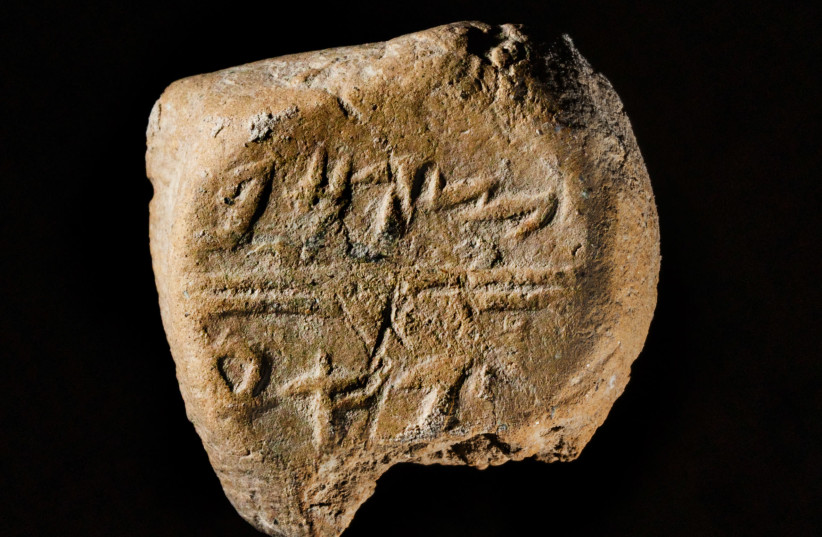
A section of Jerusalem’s city wall built during the First Temple period and mostly destroyed by the Babylonian army in 586 was uncovered by archaeologists in the City of David National Park, the Israel Antiquities Authority announced Wednesday.
“By the ninth day [of the fourth month] the famine had become acute in the city; there was no food left for the common people. Then [the wall of] the city was breached. (…) On the seventh day of the fifth month—that was the nineteenth year of King Nebuchadnezzar of Babylon—Nebuzaradan, the chief of the guards, an officer of the king of Babylon, came to Jerusalem. He burned the House of the LORD, the king’s palace, and all the houses of Jerusalem; he burned down the house of every notable person,” reads the last chapter of the book of II Kings.
The new part of the wall exposed was built to protect the city from the east on the eastern slope leading to the city. It connects two parts that had been uncovered in the 1960s by British archaeologist Kathleen Kenyon and in the 1970s by archaeologist Yigal Shiloh in the northern and southern areas of the slope. However, most scholars did not believe that the remains were to be considered part of the city wall. The new discovery however shows otherwise.
“The city wall protected Jerusalem from a number of attacks during the reign of the kings of Judah, until the arrival of the Babylonians who managed to break through it and conquer the city,” said directors of the excavation, Dr. Filip Vukosavović of the Ancient Jerusalem Research Center and Dr. Joe Uziel and Ortal Chalaf on behalf of the IAA. “The remains of the ruins can be seen in the archaeological excavations. However, not everything was destroyed, and parts of the walls, which stood and protected the city for decades and more, remain standing to this day.”
Other findings related to the period, such as seal impressions – also known as bullae – have been found during the excavation.
cnxps.cmd.push(function () { cnxps({ playerId: ’36af7c51-0caf-4741-9824-2c941fc6c17b’ }).render(‘4c4d856e0e6f4e3d808bbc1715e132f6’); });
The section uncovered was about 2.5 m. high and up to 5 m. wide.
The experts believe that when the Babylonians conquered Jerusalem, they might have not targeted the wall on the eastern slope because of its steepness.
However, they did succeed in destroying the city and the Temple, and draw Jews into exile, similar to what would happen about 500 years later at the hands of the Romans.
Once again it was the 9th of Av – which this year will fall on Sunday. To this day, Jews all over the world fast and mourn the loss of Jerusalem, commemorating these days of war and destruction millennia ago.
Content retrieved from: https://www.jpost.com/archaeology/archaeologists-find-part-of-jerusalems-wall-destroyed-on-the-9th-of-av-673794.